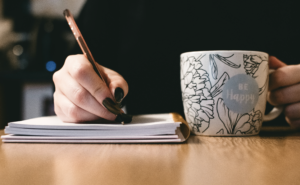by Richard Tardif
Last week I wrote about how prolonged sitting affects the glutes and hamstrings and can lead to lower back pain and postural abnormalities, which is consistent with society’s desk job syndrome, but another muscle, the Psoas (pronounced so-as), also may be contributing to back pain and misguided posture.
 The Psoas, a thick and long muscle connecting the spine with the upper leg, within Taoist tradition is thought of as the seat of the soul surrounding the lower ‘Dan tien’, a major energy center of the body. It is considered our deepest muscle aligning, like a finely tuned orchestra, structural balance, muscular integrity, flexibility, strength, range of motion, joint mobility, and organ functioning.
The Psoas, a thick and long muscle connecting the spine with the upper leg, within Taoist tradition is thought of as the seat of the soul surrounding the lower ‘Dan tien’, a major energy center of the body. It is considered our deepest muscle aligning, like a finely tuned orchestra, structural balance, muscular integrity, flexibility, strength, range of motion, joint mobility, and organ functioning.
“The Psoas is so intimately involved in such basic physical and emotional reactions,” says Lisa Chretien, personal trainer, spin coach and a yoga instructor at Mouvnation in Dorval. “A chronically tightened Psoas continually signals to your body you’re in danger, eventually exhausting the adrenal glands and depleting the immune system.”
While not typically associated to injury, a shortened Psoas spreads eventually affects the lower back, lower thoracic and the gluteal and lateral hip regions.
The Psoas shortens when sitting, a natural function in response to your feet fixed to the floor. Prolonged sitting keeps the Psoas in a shorten position, even when you stand up. This is when the orchestra begins to miss its beats. The lower spine is pulled forward. Now the paraspinal muscles of the lower back counter by tightening.
Often compared to a tug of war, this action pulls the spine down, compressing the facet joints and intervertebral discs of the lumbar spine. A tight Psoas also constricts the organs, puts pressure on the surrounding bundle of nerves, interferes with movement of fluids and impairs breathing. Discs may even herniate and press on the sciatic nerve, causing unbearable pain down one or both of the legs.
“Without the normal curve the low back is weakened and vulnerable to injury, especially in the intervertebral discs,” says Chretien. “A weak Psoas causes decreased ability to flex at the hip joint as well as difficulty bringing the trunk forward when preparing to rise up from a seated position or to walk up an incline.”
Because it is not typically an injury, restoring the normal length of the muscle requires patience and gradual stretching. “By incorporating exercises and poses to strengthen and lengthen the Psoas, you can release habitual muscle holding patterns, improve your low back alignment and create a more balanced posture and overall body function.”
Some effective yoga poses recommended by Chretien to help to release the Psoas included the Low lunge (sometimes called runner’s lunge), Bridge (holding a hip raise), wheel (advanced) or Pigeon (variations). Strengthening poses include variations of the Boat, or seated Leg Lifts.
“The best approach to the Psoas is with quiet attention, patience and perseverance. It is vital to take the time to strengthen and lengthen these muscles to get the most out of your workouts and to prevent injuries.”
As part your journey to recovery first consult a Doctor specializing in back and hip pain. There are everyday practices to help proper Psoas function.
Hip raises. As we discussed last week, hip raises, performed correctly and on a regular basis, will assist in the process of straightening your Psoas and surrounding muscles.
Move. Make it a point to get up and move during the day. The Psoas will “exercise”, lengthening and shortening and never remaining in one state.
Sit with good posture. Sit back and keep your feet flat on the ground. An Acupuncturist once told me to shift your position often when sitting, and you guessed it, move more.
Don’t sleep on your stomach. Stomach sleeping hyper-extends your lower back, adding to an already tight situation.
Get a deep massage from a trained therapist. A deep hip flexor massage can be at first painful if your muscles are tight, but it can contribute to your recovery.






